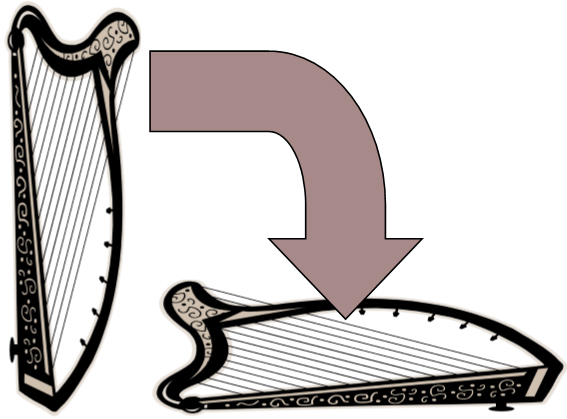How 3D Organic Printing Started From A Simple Sheppard’s Harp
3D printing promises to revolutionize our lives. And 3D printing of living cells even more so. But such an advanced technology had a rather humble beginning by today’s modern standard.
You see, many advances in human history come from taking an existing invention and then changing it in some way to make a new thing.
My favorite example of this is the evolution of the harp into something much more sophisticated. Just imagine a harp, something a simple sheppard may have played to his flock of sheep thousands of years ago – maybe to keep them calm, or perhaps to entertain himself in that lonely job.
Now, a few thousand years later, someone in Europe took a harp like that and turned it on its side, put it in a wooden box, and attached keys to feathers that would pluck the strings and viola – you have the harpsichord.
It was a piano-like musical instrument enjoyed by many for many years. But it had one drawback. And that was that you could not play notes soft or loud because of the feather plucking device. So the music seemed a little bit flat and emotionless.
So another inventor took the harpsichord, got rid of the feathers and replaced them with hammers to strike the stings instead on pluck them. Now you can strike a hammer softly, or with force, so when people played the piano, they could hit the keys hard or soft, which would cause the attached hammer to strike the key soft or hard, and suddenly they could play with emphasis and feeling.
They could play the piano soft and loud. And indeed, this is how the piano got its name, from the Italian words piano, meaning soft, and forte, meaning loud. So the new musical instrument was called a pianoforte – soft and loud. And eventually, people quit saying the forte part because it was kind of a bother, and we had our modern piano.
I’ve always liked this story because it so clearly illustrates how inventions build on each other. And also, perhaps, because my mechanical skills always center around the principle of “if you can’t fix it with a hammer, it can’t be fixed.” Well, duct tape fits in there somewhere also, but that’s another story for another time.
In any event, you may be wondering what all of this has to do with 3D printing at this point.
So here’s the story.
Some years ago, at a university, a guy had an old Lexmark printer in his lab. And it occurred to him that the extremely tiny inkjet drops that are fired at the paper were about 10 micrometers in size. And it also occurred to him that the smallest human cells are roughly the same size.
So he emptied the ink cartridge and filled it with collagen.
Collagen is a protein made up of amino acids that is found in the human body. It is the most common protein, and makes up about 30% of the protein in the human body, and 100% of the faces of aging movie actors. Okay, I may have stretched that last fact a bit, but you get my point – it is bio material.
Then he opened a Word document, and typed in his initials of TB, for Thomas Boland, his name.
And he hit the print button and out came “TB” printed in the off-white proteins of collagen. Note that he could see these clearly because he had taped a black plastic sheet onto the paper he was printing on. Also note that I would have preferred he stuck with tradition and printed “Hello World” which is the first computer program message everyone is taught when learning a new programming language, but let’s not get picky here.
Because he had used an existing printer technology in a new way that would change the world and it worked. And later he changed the paper feed mechanism to just drop slightly lower and lower instead of feeding a new sheet of paper, and viola again – 3D printing of human cells.
Which holds incredible medical promise for all of us in the future in the realm of living tissue repairs for injuries, replacement human parts, and maybe ultimately, a shot at immortality.
All from an invention technique used to improve a simple, lonely sheppard’ s harp.
To your health and prosperity – John Roberts
P.S. To give full credit where it is due, Thomas Boland was a bioengineer at Clemson University in 2000 when he first tried this incredible experiment. He is self-described as the “grandfather of bioprinting.”




